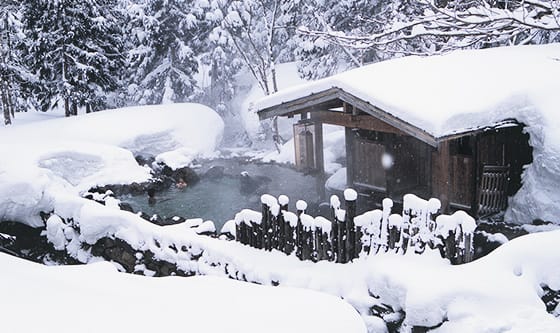International Flights
- North America ->TOKYO15 Daily flights

Akita Prefecture is a prefecture that is located in the north-western
part of the Tohoku area to the north of Honshu.
It is the prefecture with the most number of important intangible folk cultural properties in Japan,
and many unique traditional cultures and customs such as the bizarre custom of Namahage in Oga Peninsula, as well as the Akita Kanto Festival which is one of the Tohoku Big 3 Festivals, still exist today.
It is surrounded by incredible nature such as the majestic mountains and the azure Sea of Japan, and visitors can enjoy the scenery that changes along with the seasons and soak in the local vibe and hot springs over here.
Wouldn't it be nice to relax and interact with the local people in the countryside here?




The Akita Dog is a particularly famous dog breed which is native to Akita Prefecture and has been designated as a nationally protected species.
There have been various films featuring Akita Dog, and these faithful dogs are popular not only in Japan but also in other countries.



It takes about an hour to get to Akita Prefecture from Tokyo (Haneda Airport), Sapporo, Osaka, and Nagoya by domestic flight. There are two airports in Akita Prefecture: Akita Airport and Odate Noshiro Airport, and it is easy to access from just about anywhere.
You can take the Akita Airport Liner from the airport to your destination directly without having to change trains!
It takes about 4 hours to reach Akita from Tokyo by shinkansen (bullet train).
JR Rail Pass is also a great deal that can be used
in Akita Prefecture.


* As of 1 September 2019

Culture


The collective name for the seven hot springs found at the foot of Mount Nyuto, with Tsuru-no-Yu being especially famous as a hidden hot spring in the mountains. The snowy scene here is spectacular and gives off an authentic Japanese vibe.
Nature


Typical double caldera lake that spans across both Akita and Aomori Prefectures. Take in the beautiful seasonal scenery here at the lake which is also home to the Lake Towada Winter Story Festival held every winter.
Nature


The deepest lake in Japan and voted as one of the 100 best sceneries in the country. The color of the lake varies according to the water depth and the angle at which sunlight strikes the water surface. This is a mysterious lake which is also known for "The Legend of Princess Tatsuko".
Nature

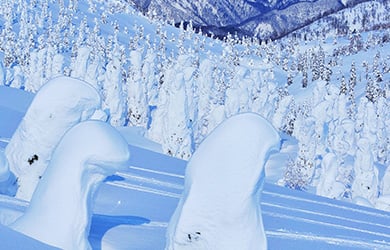
One of the three largest hoarfrost-covered trees in Japan which also looks spectacular during the night. Enjoy the view of the hoarfrost-covered trees by taking the gondola from Ani Ski Resort, followed by a 5-minute walk to get to the mountain summit where the trees are located.
Nature


Local railway measuring 94.2km from the north to the south of Akita Prefecture. It travels through the inland areas from Kakunodate, also known as "Little Kyoto", through Aniai which is home to the Matagi culture, to Takanosu which is home to the largest taiko drum in the world.
Culture


Historical samurai town which retains the history of Kakunodate. It is famous for its weeping cherry trees and Yoshino cherry trees in spring, as well as the maple trees and autumn foliage in autumn. The streets are especially charming when covered in snow and remind visitors of its other name as "The Little Kyoto of Michinoku".
Nature


A recommended spot near Akita Station to appreciate a snow-covered winter landscape. It is built on the ruins of Kubota Castle and gives off a fortress vibe with several artifacts such as the main castle gate within its grounds.
Nature


Voted as one of the top 100 waterfalls in Japan and reminiscent of a fantasy world as the entire area transforms into a pure white scene in winter.
Culture


A typical manga-themed museum which contains original drawings, photos, and profiles of various manga artists. It is home to the greatest number of collections in Japan with over 200,000 original drawings available.
Festival


Snow festival hosted at Tazawako Ski Resort which overlooks Lake Tazawa. Various events such as fire swinging, kamakura igloo displays, and firework displays are held, and snow sculptures are lit up at night to create a fantastical atmosphere.
Festival

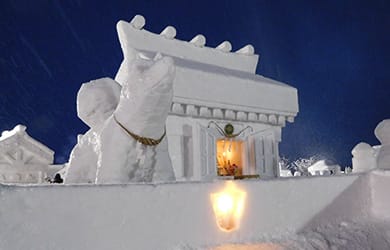
A folk event where dogs made out of rice flour are displayed by the doorways to keep robbers away. The candles inside the snow hall where snow sculptures of dogs stand are lit up at night.
Festival

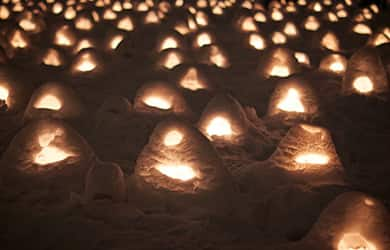
A traditional festival where water deities are enshrined in kamakura (igloo-like snow houses) with a charcoal brazier inside to provide warmth and to grill rice cakes. Amazake (warm sweet rice wine) is offered to the festival visitors. The kamakura look beautiful and floaty amid the darkness of the night.
Festival


Spectacular festival with brilliant fire circle dancing in the snow. Straw bags filled with charcoal are tied to ropes and set alight before swinging them around the body.
Festival


One of the Michinoku Big 5 Snow Festivals. The wild namahage dance is soul-stirring and powerful under the light of the Sedo fire at Shinzan Shrine.
Festival


Set of dance and music with 1,300 years of tradition and has been recognized as a UNESCO Intangible Cultural Heritage. People known as "Noshu" from the four designated districts gather at Dainichido on January 2 to dance.
Food


Known as one of the top three best udon noodles in Japan with a history of more than 300 years. These noodles have a smooth texture that is thicker and firmer than somen noodles.
Food


The typical local dish of Akita Prefecture, where freshly cooked rice is pounded and formed into cylinders around Japanese cedar skewers, and baked over a charcoal fire. It is commonly consumed as part of a hot pot dish.
Food


Hot pot dish that is famous as the local cuisine of Oga Peninsula. It is a dynamic fisherman’s dish that is prepared by putting ingredients such as fresh seafood into a wooden tub and cooked by adding in a stone that has been heated to 400 degree Celsius.
Food


Hot pot made using fish sauce from hatahata (Japanese sandfish) and tastes similar to nam pla (Thai fish sauce). Hatahata is a winter specialty in Akita Prefecture, and can also be eaten grilled or in the form of sushi.
Food


Traditional pickles in snowy Akita Prefecture which is made by hanging the radishes on top of fire (to prevent the dried radish to be used for pickling from freezing) before being pickled in rice bran.
Culture

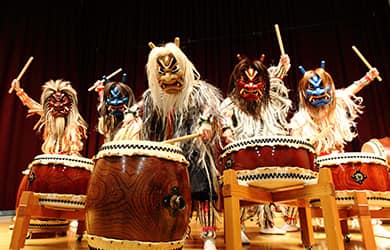
Original form of local performing arts in Oga Prefecture which fuses the namahage of Oga together with traditional Japanese taiko. The live performance at Oga Onsenkyo Village is incredible.

Here is our recommended 3-day itinerary to carefully hand-picked destinations in Akita Prefecture based on the theme of "Winter in Akita".
This sample itinerary covers the two major destinations in winter: Nyuto Onsen and the hoarfrost-covered trees at Mount Moriyoshi.

- Take the limousine bus to Akita Station (approx. 40 minutes)
- Take Tazawako Line from Akita Station to Tazawako Station (approx. 20 minutes)
Samurai residences that retain their original look and feel from the Edo period along the wide streets, with gorgeous scenery and streets as the area gets covered in snow during the winter.

- Take Tazawako Line to Tazawako Station (approx. 20 minutes)
- Take a bus from Tazawako Station to Nyuto Onsen Tsuru-no-Yu (approx. 35 minutes + shuttle bus 15 minutes)
The collective name for the seven hot springs found at the foot of Mount Nyuto. These seven inns that are hidden deep in the mountains each have different hot spring qualities.
Stay in Tsuru-no-Yu, a hidden hot spring inn that has existed since the Edo period, for the first night.
